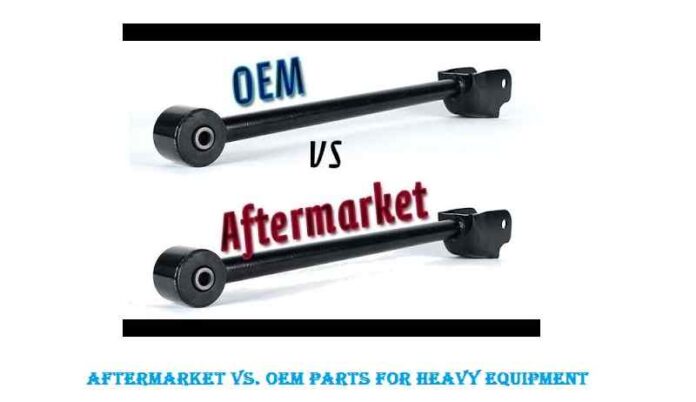
If you use heavy equipment for your business, you can extend its lifespan by replacing parts as they weaken through wear and tear. This will save on the cost of buying all new equipment.
You can repair or upgrade your equipment using original equipment manufacturer (OEM) parts or aftermarket parts.
What are OEM parts, and how do they differ from aftermarket parts? What are the pros and cons of using them? Let’s take a look.
What Are OEM Parts?
Heavy equipment manufacturers either produce their parts or subcontract production to an OEM supplier. You can usually buy replacement parts direct from the manufacturer or OEM supplier. They are most likely to have parts available for newer equipment models.
OEM parts are designed to work with your equipment. They will provide the best fit and highest performance. Most OEM suppliers provide a warranty to cover any problems with the parts.
You will need to contact the manufacturer or supplier directly to buy OEM parts, as they will not be available from every parts dealer.
What Are Aftermarket Parts?
Manufacturers other than the OEM supplier produce aftermarket parts. The global aftermarket for construction equipment is forecast to hit a record $30 billion by 2027, research shows. These producers have the advantage of making improvements to the parts that can enhance the performance of the equipment.
There are more options to choose from than the single OEM part. There is more competition between manufacturers of aftermarket parts for different brands, including New Holland. This means that prices tend to be lower.
But with a wider choice of aftermarket parts, it can be a challenge to select the best option for your equipment. Some aftermarket parts offer higher quality than OEM parts. But not all of them do, so it is important to do your research to find the highest quality parts as you could void your equipment warranty.
What Should You Consider When Choosing Between OEM or Aftermarket Parts?
OEM parts have the advantage of providing an exact replacement for your original equipment parts. But some aftermarket parts offer performance improvements on the OEM specifications. Using the highest quality parts is an important safety consideration when you are repairing construction equipment.
You should compare OEM parts and aftermarket parts to see which are the best fit for your needs.
- budget
- quality
- specifications
- availability
- supplier locations
- delivery times
- warranty
With older equipment, you may have to use aftermarket parts if OEM parts are no longer available. As aftermarket parts are easier to find, you can often get them delivered faster.
Choose the Right Aftermarket or OEM Parts for Your Equipment
Now that you know the difference between aftermarket and OEM parts for heavy equipment, you can make the best choice for your business. OEM parts are an easy option, but aftermarket parts can offer higher quality at lower prices. Be sure to do your research to find the right option.
For more helpful tips, have a look at the other posts on our blog.

